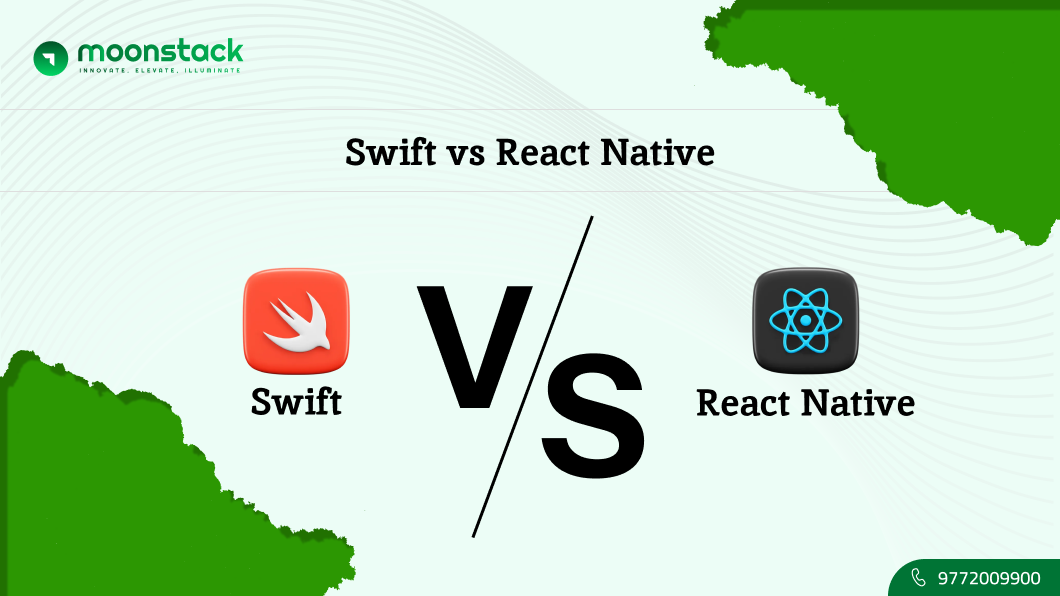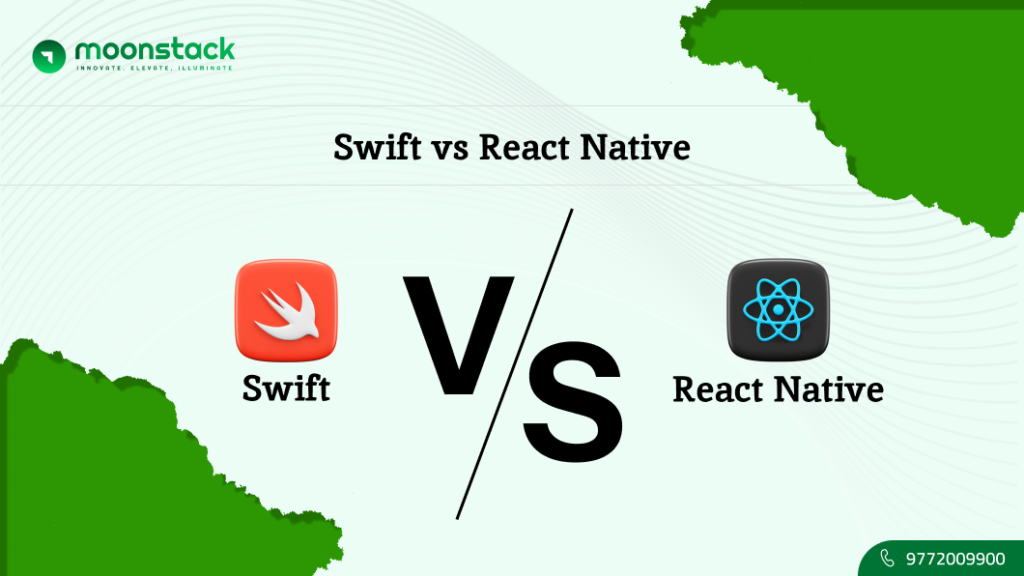A Comprehensive Road-map to Becoming an Android Developer


However, there are many other difference between Swift and React Native that must be ensure before selecting one for your project.
If you’re wondering whether to choose for your next mobile app development project in 2025: Swift or React Native, this article can help. For example, Swift has richer UI/UX components built into the framework, whereas React Native makes use of APIs. We will provide a brief definition, advantages and disadvantages, and key distinctions between React Native and Swift.
What is React Native in Development? – 1st cross-platform framework
React Native is a JavaScript-based framework for developing iOS and Android mobile applications, it launched by Facebook in 2015. The React Native framework was designed to speed up mobile development and enable cross-platform mobile applications. The program is used to create applications such as Wix, Walmart, and Bloomberg.
React Native uses JavaScript, which is more useful than Swift and the most frequently used language in the world. Developers can share up to 70% of their code across platforms thanks to JavaScript’s code reusability feature. This will save you money and effort when developing cross-platform apps. React native app development businesses may create code for both iOS and Android platforms.
Advantages and Disadvantages of React Native
Advantages of React Native:

1. Time Efficiency:
React Native is operating system-independent, which significantly reduces the development cycle and time to market. This is accomplished by writing a single code and deploying it to both platforms with minor native changes. Aside from that, React uses JavaScript to enable code reusability, allowing it to reuse 90% of the code while saving developers time and efficiency.
2. Smaller Team Requirements:
Building a single iOS and Android app allows you to have one JavaScript team on staff instead of two native development teams. You will also eliminate timeline mismatches, which are typical when two teams are working on two applications at once. Finally, having a single team execute all of the work eliminates problems that arise when one of the developers falls ill, as his or her peers can simply pick up the slack.
3. Hot reloading:
Hot Reloading enables React Native Developers to monitor the most recent updates and changes in the application development process in real time without restarting it. The functionality is modest but critical for speeding up the entire mobile app development process.
4. Modular Architecture:
React Native’s modular architecture separates diverse program functions into customizable modules. This promotes flexibility, improves collaboration, and enables seamless upgrades. It makes it simple for a React native app development business to distribute app updates and promotes module reuse, similar to web APIs. This boosts efficiency and allows for code reuse.
Disadvantages of React Native
1. Performance.
In terms of performance and speed, cross-platform solutions continuously lag behind native apps. React Native applications occupy more space on the device and, on average, give a poorer user experience for your customers. However, this issue is only significant when addressing highly dynamic items like games.
2. Complex testing.
Although React Native allows for speedier application development by using a single code source, testing takes longer than Swift. React Native apps require more work and precision when testing, as defects are likely to arise on both platforms.
What is Swift in Development? – The iOS App Development Programming Language
Swift is a computer language built on Apple technologies. Swift was designed in 2014 to replace Apple’s previous programming language. The programming language was named Objective-C. Swift is popular among iOS app development businesses because it is an intuitive language that reflects Apple’s general philosophy. Many strong mobile apps, like Lyft, Airbnb, and Twitter, are built using this programming language.
There is a useful ARC (automatic reference counting) tool for working with RAM. Surprisingly, this language does not have a single “progenitor”. Instead, Swift’s designers drew on a range of languages, including Object-C, Haskell, Python, C#, CLU, and others.
Advantages & Disadvantages of Swift
Advantages of Swift:

1. Faster development:
Apple released Swift above its predecessor, Objective C, claiming that it was 2.6 times quicker. Furthermore, the language has a simple and compact syntax, and it compiles code directly to machine code using its LLVM tool, allowing a Swift app development business to complete projects more quickly.
Aside from that, the Automatic Reference Counting feature effectively manages memory utilization, ensuring consistent performance.
2. Compatible with Objective-C:
Existing Objective C codebases can simply integrate with Swift and run seamlessly. This allows app development organizations to take advantage of Objective C’s efficient capabilities, as well as new Swift functionalities.
3. Readability
Swift features a straightforward language style and concise grammar, making it simple to learn for developers. The language is more understandable than others and requires less coding lines to construct mobile apps, lowering the time to market duration.
4. Improved UX
Swift is a lightweight programming language, therefore it requires less storage space on the device and takes less time to install. Furthermore, the language supports native functionality and was specifically designed for native iOS mobile app development. As a result, users can create better-performing and more visually appealing applications, attracting an increasing number of users.
disadvantage of Swift
1. small community size
The Swift open-source community may not be as large as others right now, which could result in fewer experienced developers and resources available to novices in need of support. Nonetheless, it’s always increasing.
2. Compatibility issues
Swift’s inability to offer backward compatibility poses a number of issues. This is because work completed in prior versions may not move smoothly to the current ones. Despite this, Swift has attempted to address the issue directly, particularly with the fifth version release.
Which is Best between React Native or Swift?
So, this was a comparison between React Native and Swift for mobile app development. Both have strengths and weaknesses, therefore there is no obvious winner.
Swift is an excellent choice for designing iOS apps that require high-quality performance and powerful graphics. The language provides a practical and customizable technique for developing iOS applications, making it an excellent choice.
React Native, on the other hand, is an excellent solution for developing cross-platform applications for both iOS and Android OS. React native frameworks offer certain remarkable capabilities, such as hot reloading and code reusability, which speed up the mobile app development process.
Thus, announcing a winner among them is unreasonable. Both are growing technologies, and one must chose based on their needs.
Closing statement:
Finally, examine your requirements, project needs, and a variety of other considerations. Budget, app kind, and project timeline are a few of the most prevalent considerations. For example, if you want to create an iOS app with a solid UI/UX designing and high-performance capabilities, Swift is an excellent choice. Aside from that, selecting the right mobile app development company is critical. The technical partner should have the necessary experience and resources to complete your project.
Connect with Moonstack
Ready to take the first step towards unlocking opportunities, realizing goals, and embracing innovation? We're here and eager to connect.


